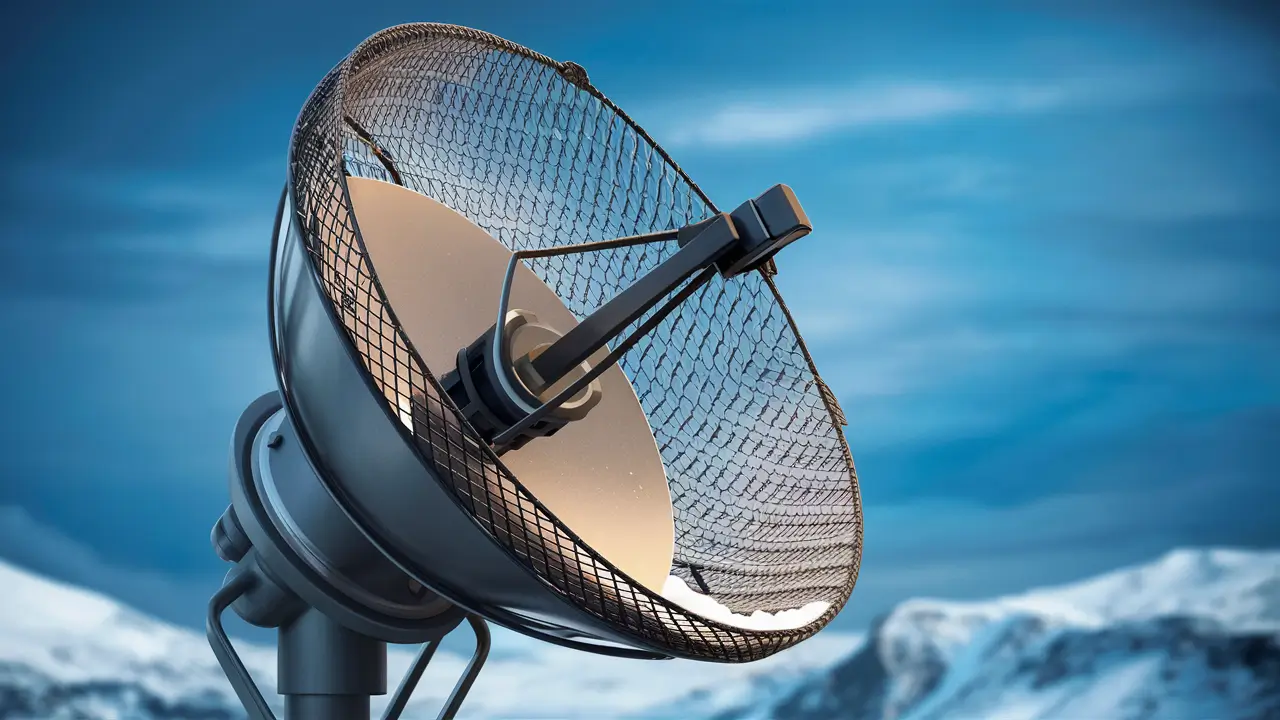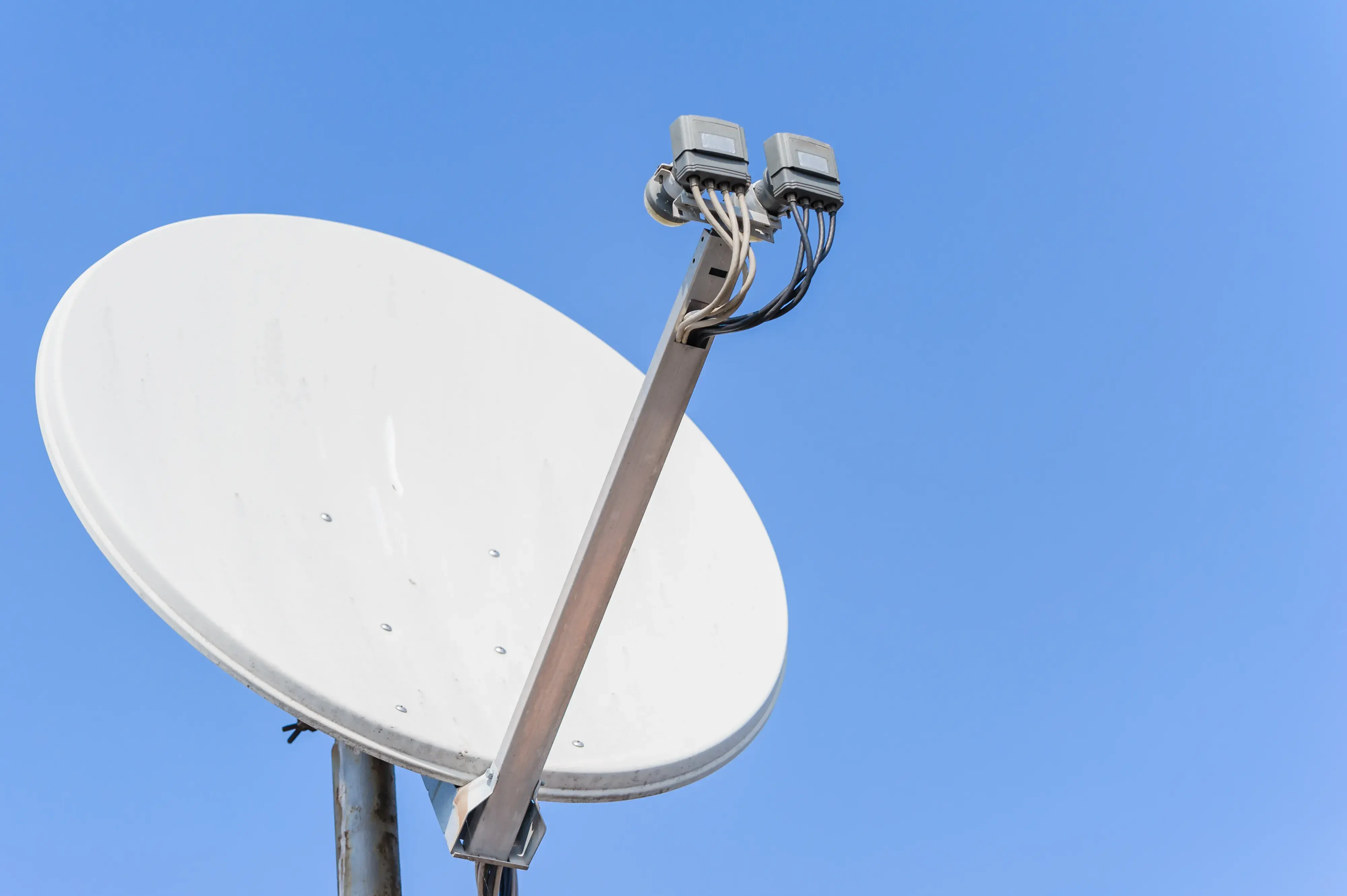-
Posted on: 13 Aug 2024

-
It is advisable to try and ensure that your SATTV INTERNET is free from snow and ice especially during the cold season. It is very much possible to lose signal, get pixelated images, or even lose the service altogether if a dish is covered with a layer of ice or any other frozen precipitation. However, there are several ways how snow and ice can be prevented from forming and how the existing formation can be removed.
Clean The Surrounding Of The Dish
To avoid satellite dish snow and ice problem start it from the time when winter is not even nearby, if there is any tree or branches which is over the dish then trim it. Falling snow on trees is also another usual cause of interference with signals. Some guidelines include pruning trees that are growing close to the dish at least 3-5 feet away from it.
Use a snow fence or any decorative fence around the dish if drifting is a problem in your area. The fence will prevent blowing and drifting of ground snow as it shall cover the entire length of the area where snow is likely to accumulate. Position it 3-5 feet away from the dish mount.
Guarantee that guy wires are tightened
Roof mount satellite dishes and pole mount satellite dishes are very common and the guy wires or cables are tightened to provide extra wind support. Before winter sets in, check any adjustable tightening bolts of your dish mount guy wires and tighten them up. This minimizes the chances of the dish moving around and getting more of the blowing snow on it.
Apply Water Repellent Sprays
If you want to make it easier to remove the snow and ice buildup later, you should spray the dish with a water repellent spray made of silicone. The shiny surface of the slick means that the frozen precipitation melts and slides off the dish surface during sunny periods. It is recommended to reapply the repellent every 1-2 months for the best results.
Make it a point to check on the dish from time to time.
It is recommended that you should get in the habit of checking your satellite dish every few days during the winter months or after any severe weather that involves snow or freezing rain. Ice damming and drift buildup are signs that are better detected as soon as possible before the ice hardens and prevents the signal from coming through.
Use A Soft-Bristle Broom
In instances where the amount of snow is light, or the accumulation is less than one to two inches, using a soft bristled broom can work well in sweeping off the snow and ice from dishes. It is important to use a broom which has plastic bristles and not the stiff and scratchy natural bristles that may scratch the dish material.
Give It A Go With A Heat Gun Or Hair Dryer
If the ice is very thin and barely covering the windshield, it may be possible to blow it off with a handheld heater in the form of a heat gun or hair dryer on low and cool settings. This is more favorable than cutting through delicate dish parts with the help of scrapers or shovels. But, it is only possible for very thin layers of ice on the surface of the water body.
Install Deicing Cables
Heated deicing cables are the most convenient and trouble-free solution when it comes to preventing satellite dishes from accumulating ice during the winter season. The cables connect to dish mounting arms and warm up just enough to avoid accumulation of ice which prevents the signal. These ones switch on whenever low temperatures are detected; therefore they operate round the clock.
Deicing may also be done by using deicing sprays and liquids.
Specialized anti-icing solutions also refer to deicing sprays or rubbing liquids that include glycols and alcohols that melt ice immediately. They quickly weaken the bond between snow ice and dish surfaces so that you can easily wash them. Use it again after snow brushing for more effectiveness since it removes the frozen precipitation. Consult the product label to know the compatibility of products with satellite dish.
Try An Ice Scraper
A normal ice scraper that has a foam handle but is made of plastic can shave off thicker ice layers after you have applied liquids to the surface of the ice. To remove the ice without scratching the equipment, use gentle up and down motions while steadying the dish arm. Smothe any sharp edges, corners or rough surfaces of the ice.
Attach A Weather Shield
Having a modular weather shield to enclose and heat an air space around the dish means that there is no snow or ice to obstruct the signal in the first place. The tent-like shields fit onto your current gear and include a ventilation system and heating components that distribute warm air. This dependable foul weather shield maintains dish clarity but must be professionally installed.
Employ an extendable snow rake.
For general scraping of moderate snow loads or even ice pieces from hard-to-reach elevated dishes, an extendable snow rake will be useful. The telescoping aluminum handles provide the ability to clear snow off of even high pitched roofs or second story while standing safely on the ground. Swing the curved rake head sideways to lightly slide across the dishes so that it can remove the frozen foods without scratching the dish.
Looking for an efficient solution to remove snow from your car or anything else? Then you need to try a foam cannon snow remover.
Foam cannon snow tools connect to standard garden hoses and emit a highly pressurized foam solution that holds to the surface and removes the snow/ice without harming the equipment. Tweak the foam consistency knob for thickness; it controls the thickness of the foam. The thick foam layer melts away and peels off even the most persistent layer of ice. This leaves dishes snow-free with very little scraping or chipping.
Consult A Professional
If your satellite TV involves routinely dealing with heavy snow and ice dish problems each winter, it may be advisable to have a professional installation/repair technician inspect and make necessary adjustments to your equipment. They have high-quality deicing equipment, weather guards & covers and the experience to devise long-term solutions on having your system signal uninterrupted despite the bad weather. An available method if one cannot employ Do-It-Yourself approaches to fix repetitive issues.
Essentially, stopping snow and ice forming on your satellite dish does not have to become a dreaded winter task when you get into a schedule to do so. A little preparation in advance and immediate cleaning up after the storm are enough to ensure the continuity of television programs throughout the storm season. Maintaining dishes free from ice or water buildup over time is crucial to avoiding costly repairs or replacement of the equipment due to the continuous accumulation of ice or water. Try out several of these convenient snow removal strategies this winter to prevent icy build-up from interfering with your satellite dish signals.
Ready to upgrade your TV experience? Call us now at (877) 471-4808 to find the perfect Dish Network plan for you! Don’t miss out on great entertainment—our team is here to help you choose the best package and get you started today.





